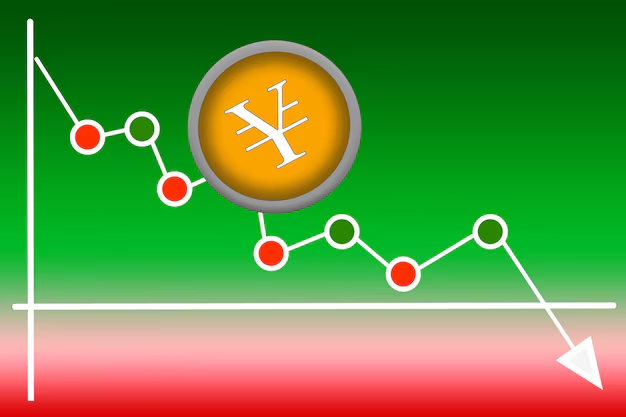What exactly is the formula for the Flow Index, and how can you use it effectively in forex trading?
When trading in the forex market, understanding indicators can mean the difference between success and failure.
One such indicator is the Flow Index, an essential tool that helps traders analyze market trends and predict price movements.
In this guide, we will cover its formula, how to calculate it, how to use it in forex trading, and its pros and cons.
By the end, you’ll have a clear understanding of how this indicator can help you make better trading decisions.
In This Post
What is the Flow Index in Forex Trading
Before looking into the formula, let’s first understand what the Flow Index is and why it matters.
The Flow Index (FI) is a momentum indicator that helps traders identify buying and selling pressure in the market.
It combines both price movements and trading volume to give a clearer picture of what’s happening in the forex market.
Many traders rely on the Flow Index because it helps them detect overbought or oversold conditions, which are crucial for making informed trading decisions.
Why is Flow Index Important?
- It helps traders determine whether a currency pair is overbought (too expensive) or oversold (too cheap).
- It improves accuracy when predicting trend reversals.
- It is based on both price and volume, making it more reliable than indicators that only focus on price.
- It provides timely trading signals, which is crucial for forex traders looking for entry and exit points.
Now that we understand its importance, let’s move on to the formula.
What is the Formula for the Flow Index?
The Flow Index (FI) formula is calculated using the following steps:
Step 1: Calculate the Typical Price (TP)
High + Low + Close / 3
Where:
- High = Highest price of the currency pair during the period
- Low = Lowest price of the currency pair during the period
- Close = Closing price of the currency pair during the period
Step 2: Calculate the Raw Money Flow (RMF)
Rawmoneyflow = TP x Volume
Where:
- Volume = Number of trades during the period
This gives an idea of how much money is moving in or out of the currency pair.
Step 3: Determine the Money Flow Ratio (MFR)
Money Flow Ratio (MFR) = Positive Money Flow (RMF) / Negative Money Flow (RMF)
Where:
- Positive Money Flow: Sum of RMF for periods where TP is higher than the previous period.
- Negative Money Flow: Sum of RMF for periods where TP is lower than the previous period.
Step 4: Calculate the Flow Index (FI)
The formula for calculating the Flow Index (FI) or Money Flow Index (MFI) is:
MFI = 100 – 100 / 1 + Moneyflowratio
How to Use Flow Index in Forex Trading
Now that you know how to calculate the Flow Index (FI), let’s quickly look into how to use this tool effectively in forex trading.
Understanding how to apply the FI in different market conditions can help you make smarter and more informed decisions when executing trades.
1. Identify Overbought and Oversold Conditions
In forex trading, identifying overbought and oversold conditions is crucial. The Flow Index (FI) can help traders recognize when a currency pair might be due for a reversal.
Overbought Conditions (FI Above 80)
When the Flow Index is above 80, it typically signals that the market is overbought. This means that the price has gone too high too fast, and there might be a price correction or pullback soon.
A smart trader would be cautious of entering a buy trade when FI is above 80 because the market might soon reverse.
Let’s say you are trading the EUR/USD pair and the FI reaches 85. This high reading suggests the market is overbought.
The price has likely surged rapidly, and the trend may be nearing its peak. A price drop may follow, so you might consider selling or waiting for the price to stabilize before taking any further action.
Oversold Conditions (FI Below 20)
Conversely, when the Flow Index is below 20, it indicates that the market is oversold. This suggests that the price of the currency pair has been driven down too much and too quickly, making a price increase or reversal likely.
When FI is low, traders may see it as an opportunity to buy, anticipating a price increase.
If you’re trading the GBP/JPY pair and the FI reads 15, it signals that the market is oversold. The downward pressure on the price has been excessive, and a reversal to the upside may be imminent.
In this situation, a trader might look for a buying opportunity as the market begins to recover.
2. Confirm Trend Reversals
The Flow Index can also be a helpful tool for confirming potential trend reversals. In forex trading, understanding when the market is about to change direction is key to making successful trades.
The FI helps you identify these changes before they happen, allowing you to adjust your trading strategy accordingly.
Trend Reversal to the Downside (FI Dropping from Above 80)
If the FI starts dropping from a high level (above 80), it can be an early sign that the current uptrend is weakening and that the market might reverse to the downside.
When the FI is high, it indicates strong buying pressure, but if it begins to fall, it suggests that the buying momentum is fading, and a sell opportunity may present itself.
If you are trading the USD/CHF pair, and the FI is at 82. Over the next few hours, the FI drops to 75. This signals that the uptrend is losing steam, and the market could soon reverse.
As the FI continues to decline, a trend reversal to the downside might be confirmed, prompting you to consider a sell position.
Trend Reversal to the Upside (FI Rising from Below 20)
When the FI starts rising from a low level (below 20), it could signal a potential reversal to the upside.
The low reading indicates oversold conditions, but as the FI rises, it suggests that buying pressure is building and that the trend may shift upward.
If you are watching the AUD/USD pair and the FI is at 18, and then over the next few hours, it rises to 22, this could be an indication that the market is reversing upward.
Traders would then look for additional confirmation, such as bullish candlestick patterns, to open a buy position.
3. Spot Divergences
Divergences are powerful signals that can help you predict market movements in advance.
A divergence occurs when the price of a currency pair is moving in one direction, but the Flow Index is moving in the opposite direction.
This can indicate that the current trend is weakening, and a reversal may be near.
Bearish Divergence (Price Making New Highs, but FI is Falling)
If the price of the currency pair is making new highs, but the FI is falling, this suggests that the upward momentum is weakening.
This could be a sign that the market is overextended and a trend reversal to the downside is likely. A bearish divergence is a warning that the uptrend may be nearing its end.
Let’s say the USD/JPY pair is making new highs, but the FI is dropping. This is a bearish divergence, indicating that the upward momentum is losing strength.
Traders will likely look for confirmation from other technical indicators, such as candlestick patterns (e.g., shooting star or bearish engulfing) before deciding to enter a sell position.
Bullish Divergence (Price Making New Lows, but FI is Rising)
On the flip side, if the price is making new lows but the FI is rising, this signals that the downward momentum is losing strength.
This is a bullish divergence and could indicate that the market is about to reverse to the upside. Traders may use this information to look for buying opportunities.
Suppose you are trading the NZD/USD pair, and the price is making new lows, but the FI starts to rise.
This is a bullish divergence, showing that sellers are losing control, and buyers are starting to take over. A bullish reversal could be coming, and traders might look to enter a buy position.
Example of Flow Index in Forex Trading
Let’s take another look at how the Flow Index works in a real trading scenario.
You are trading the EUR/USD currency pair, and you notice that the Flow Index is showing the following:
FI = 85: The market is overbought. The price has been moving upwards for a while, and the FI value suggests that it may be time for a price correction or reversal.
As a trader, you need to decide if to wait for additional confirmation (like a bearish candlestick pattern) before entering a sell trade.
FI = 15: The market is oversold. The price has been falling rapidly, and the FI value suggests that the market could be due for a price increase or reversal.
As a trader, you should look for signs of a reversal, like a bullish candlestick pattern or confirmation from other indicators like RSI or MACD, to consider entering a buy trade.
Confirmation before Entering Trades
While the Flow Index can be a very useful tool, it is important to wait for confirmation before entering a trade.
Relying solely on the FI indicator without considering other factors can lead to false signals. Below are some tips for confirming trades before executing them:
1. Candlestick Patterns
Look for candlestick patterns like bullish or bearish engulfing, doji, or hammer candles. These patterns can help you confirm the potential direction of the market.
2. Other Indicators
Use other technical indicators like the Relative Strength Index (RSI) or Moving Average Convergence Divergence (MACD) to confirm whether the market is overbought or oversold.
These indicators can help validate your decision based on the Flow Index reading.
3. Support and Resistance Levels
Always consider key support and resistance levels. If the Flow Index shows overbought or oversold conditions near these levels, it could strengthen the signal for a potential reversal.
Pros of Using Flow Index in Forex
Like all indicators, the Flow Index has its strengths.
- The formula is simple, and its interpretation is straightforward, making it beginner-friendly.
- Unlike some indicators that rely only on price movements, the Flow Index considers both price and volume, making it more reliable.
- It helps traders find good entry and exit points by showing when the market is overbought or oversold.
- It can help traders spot potential trend reversals before they happen, giving them an edge in the market.
Cons of Using Flow Index in Forex
The Flow Index also has its weaknesses.
- The Flow Index reacts after price movement, meaning it does not predict trends in advance.
- In a ranging market (when the price moves sideways), the Flow Index may give misleading signals, leading to incorrect trades.
- It works best when combined with other indicators, such as RSI, MACD, or Bollinger Bands, for increased accuracy.
FAQs
What is the best time frame for using Flow Index in forex trading?
- The best time frame depends on your trading style. Day traders prefer shorter time frames (5-15 minutes), while swing traders use longer ones (1-hour, 4-hour, or daily charts).
Is the Flow Index the same as RSI?
- No. Flow Index includes volume, while RSI only uses price. This makes the Flow Index a better indicator in markets where volume plays a significant role.
Can the Flow Index be used alone?
- It’s not advisable to use the Flow Index alone. It works best when combined with trend indicators like Moving Averages, RSI, or MACD.
Does the Flow Index work in crypto and stocks?
- Yes, the Flow Index can be applied to cryptocurrency and stock trading, but it is most commonly used in forex trading.
Conclusion
The Flow Index (FI) is a good tool that combines price movements and trading volume to help traders make informed decisions and it’s also good that you get familiar with the formula for FI.
By using it correctly, you can identify overbought/oversold conditions, and spot reversals, and confirm trends in forex trading.
However, like any trading indicator, it’s not 100% accurate and should always be used with other tools to increase success rates.
If you found this guide helpful, share it with fellow traders and leave a comment with your thoughts.




